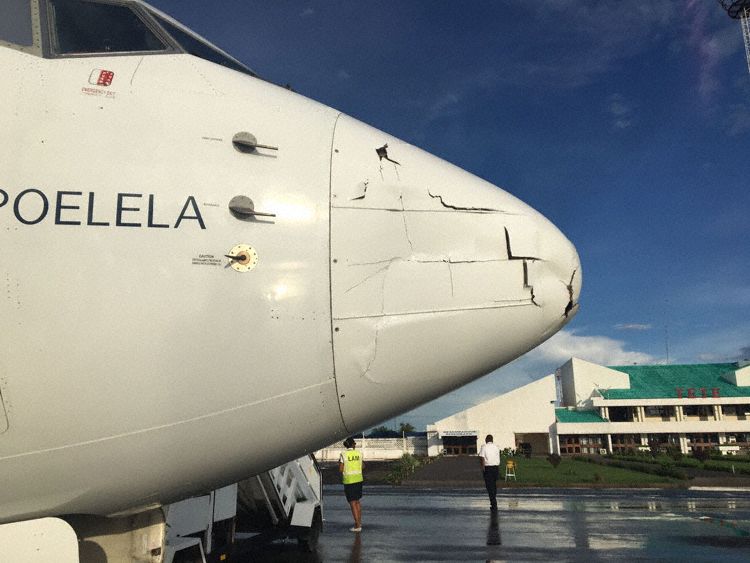 News and Commentary. Here we go again. Mea Culpa, even DRONELIFE thought the pictures showed evidence of a drone strike. The story seemed to add up: the pictures showing a torn radome of a passenger jet in Mozambique and crew reports of hearing a loud impact noise appeared to indicate that something heavier than a bird had hit the plane. The mining sites that surround the airport – and use commercial drones daily – seemed like a reasonable culprit. The Commercial Drone Alliance issued a statement (wisely couched in less than definitive terms about the incident) expressing their concern.
News and Commentary. Here we go again. Mea Culpa, even DRONELIFE thought the pictures showed evidence of a drone strike. The story seemed to add up: the pictures showing a torn radome of a passenger jet in Mozambique and crew reports of hearing a loud impact noise appeared to indicate that something heavier than a bird had hit the plane. The mining sites that surround the airport – and use commercial drones daily – seemed like a reasonable culprit. The Commercial Drone Alliance issued a statement (wisely couched in less than definitive terms about the incident) expressing their concern.
But none of it, it now appears, actually happened. As The Digital Circuit reports, that there was no drone involved. No drone, no bird, and no plastic bag. In fact, those widely circulated pictures of the damage to the radome of the plane indicate a structural fault in a second-hand radome. The Aviation Herald, the site which reports on aircraft incidents across the globe and which first reported the Mozambique incident, has updated the article to reflect the results of a press conference held by Mozambique’s federal agency:
“On Jan 10th 2017 Mozambique’s Civil Aviation Authority reported in a press conference in Maputo that they concluded the radome most probably failed as result of a structural failure caused by air flow pressure, contributing factors probably were a defective installation of the radome and inspection of the ribs. A foreign object damage was ruled out. The CAA added, that the radome had been purchased second hand through an American company supplying aircraft parts and components, the radome was installed on the aircraft during major maintenance in South Africa on Jun 27th 2016.”
By now we should have learned. Of the most widely reported drone incidents – including the one last year at Heathrow airport, which was later concluded to be a plastic shopping bag – not one has yet provided any real evidence of a drone collision. With any luck at all, there won’t be – as certification, airspace integration and communication methods move forward, certainly the technology is on the drone industry’s side to ensure safe operation.

Miriam McNabb is the Editor-in-Chief of DRONELIFE and CEO of JobForDrones, a professional drone services marketplace, and a fascinated observer of the emerging drone industry and the regulatory environment for drones. Miriam has penned over 3,000 articles focused on the commercial drone space and is an international speaker and recognized figure in the industry. Miriam has a degree from the University of Chicago and over 20 years of experience in high tech sales and marketing for new technologies.
For drone industry consulting or writing, Email Miriam.
TWITTER:@spaldingbarker
Subscribe to DroneLife here.







“With any luck at all, there won’t be”
Wishful thinking or head in the clouds? Of course there will be drone collisions. It’s not if, but when!
It would be great if none of them cause any serious casualties, human or mechanical, but even that I know is a very doubtful proposition.